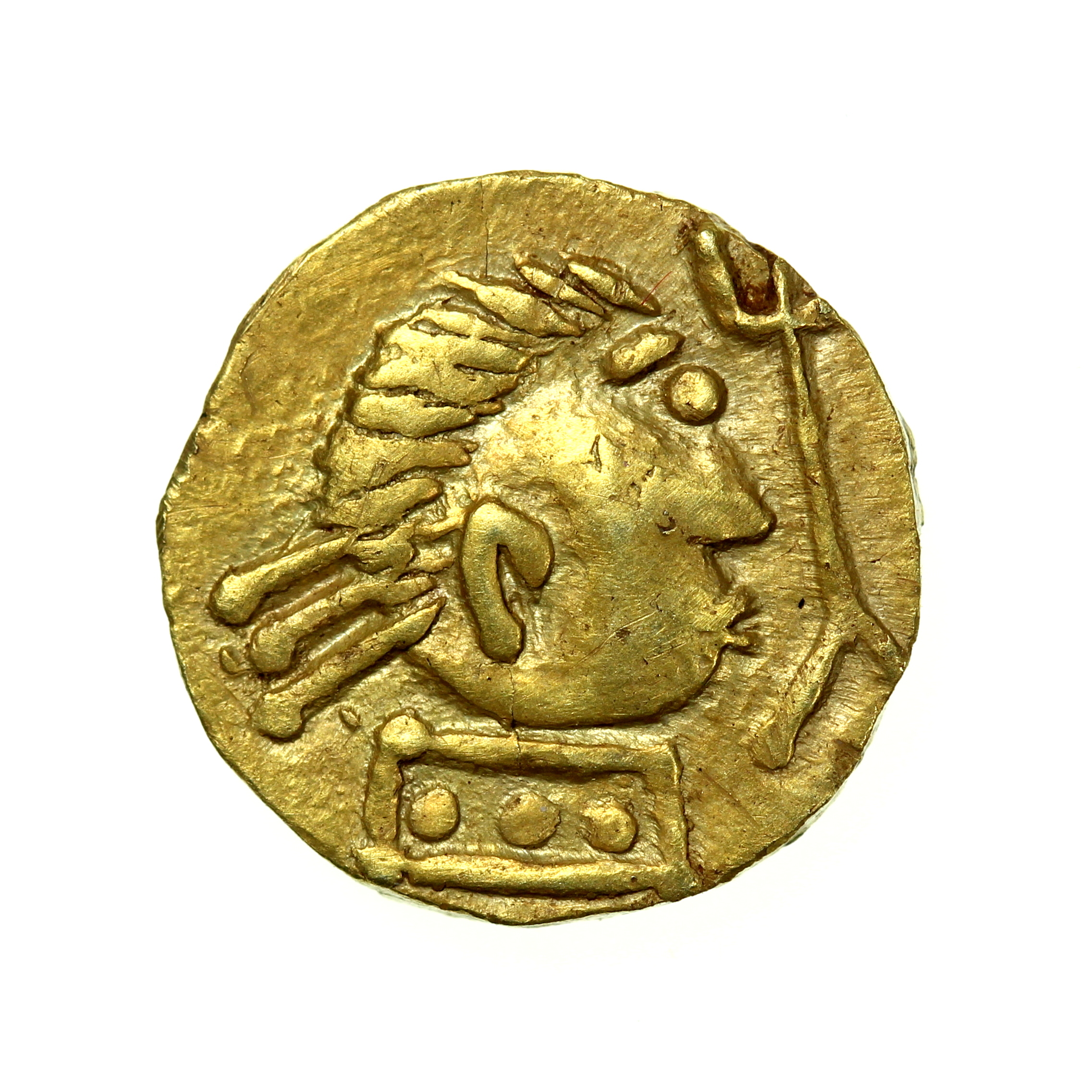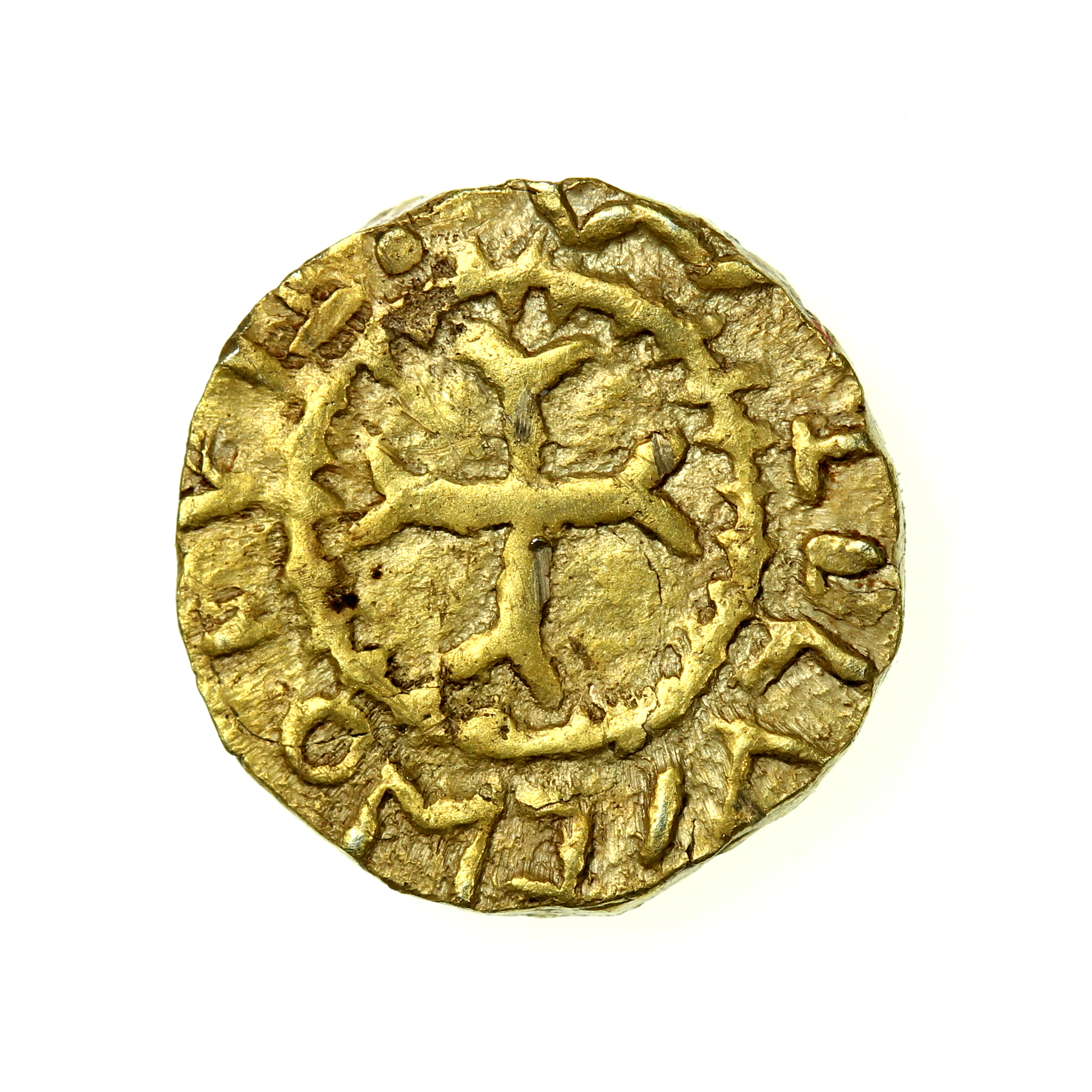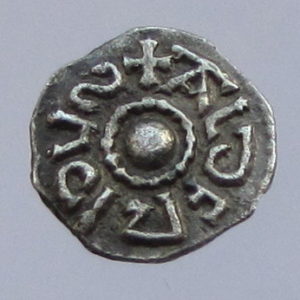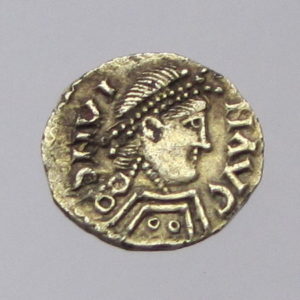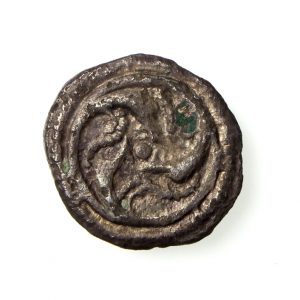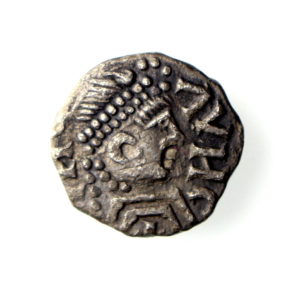Anglo Saxon Gold Thrymsa/Shilling 620-645AD Crondall Period Witmen type Extremely Rare
£6,950.00
Anglo Saxon Gold Thrymsa/Shilling 620-645AD Crondall period, Witmen type. Extremely Rare.
Bust right with Trident/ Cross, blundered legend around.
S753, 11mm, 1.29g
Seldom can we offer our customers the chance to own a gold coin from this period, especially in high grade as this example is.
A brief history of the early 7th Century
The withdrawal of Roman forces from Britain in the 5th Century AD led to a rapid demise in society including areas such as coinage. In fact there was nearly two hundred years where no coins at all were struck (we can say this with confidence as if coins had been made during this period they would have been lost and found as with all other periods). Sometime in the early 7th Century the value of having a coinage became apparent once again and the first Thrymsa’s started to appear. These are very rare and the majority of early pieces known were found in one location in 1828AD, later to be known as the Crondall hoard, worth a visit to the Ashmoleon Museum in Oxford just to see this. The first silver coins (referred to as a Sceat or Sceatta) made an appearance in the late 7th Century and are thought to have been made in South East England. These were joined by the Continental series which includes the Porcupine sceat (series E) among a few other types. The 8th Century brought what is known as the ‘Secondary Series’ which is by far the most diverse with some 20-30 main types, each with several variations. The art on the secondary series is mesmerising. Much of it has hidden meaning which the Saxons are famous for and we can only guess at, some is clearer than other for example the bird fighting with a serpent on the series Q coins accepted to be depicting the fight between good and evil. Collecting the coinage from this period is like diving into a good fictional novel, immersed in the world of fanciful beasts and horned gods, brought to life by these little masterpieces.
Out of stock

